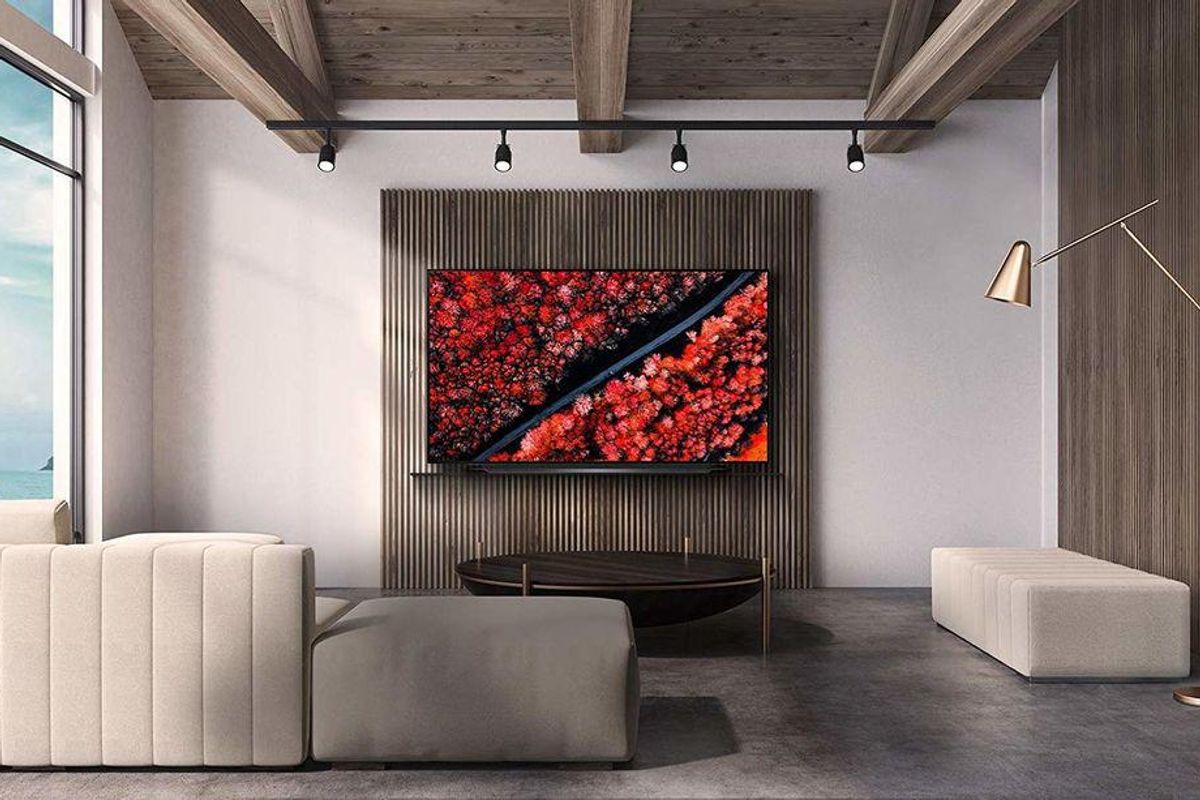Entertainment Systems

LG
What is an OLED display? Everything you need to know
Once reserved for ultra-expensive televisions, OLED screens are increasingly commonplace

Once reserved for ultra-expensive televisions, OLED screens are increasingly commonplace
OLED displays were once only found in the most expensive televisions – and even now, they remain rare and somewhat more expensive than their LCD cousins. But now, they are increasingly commonplace across the technology industry, especially in smartphones from iPhone 12 and on.
OLED is also being joined by an increasing range of alternative display technologies, including Samsung's QLED and the Mini LED displays used most recently by the 2021 iPad Pro. So we thought it was time to explain what OLED is, why it differs from other types of display, and whether it is worth the premium.
What is OLED, and how does it work?
Many regard OLED as the very best in television display technology. OLED stands for Organic Light Emitting Diode and produces deeper blacks and more vibrant colors than a regular LCD screen. This has nothing to do with the resolution but rather with the technology used by the display panel itself, particularly how it is illuminated.
OLED panels are incredibly thin, as they don't require a backlight system, making them aesthetically more attractive. They don't have a backlight because the diodes themselves produce their own light – hence the organic part of the name – meaning each screen pixel has its own light source.
This makes a big difference compared to a regular LED-illuminated LCD display. A handful of LED bulbs usually backlights an LCD screen. This works well and has been done for years, but it means the screen struggles to simultaneously show a picture containing bright and completely dark sections.
The benefits of OLED screens
Say a movie scene has a brightly lit area and one in total darkness in the same frame. The LEDs needed to illuminate the brighter section will bleed into the darker section, preventing that area from showing true black. The new Mini LED technology goes some way towards addressing this by adding many more smaller LED bulbs. That way, there is far more granular control over the thousands of LEDs behind a screen, helping to produce brighter highlights and deeper blacks.
However, this cannot match an OLED panel, where each pixel can be illuminated or switched off to create total darkness, which manufacturers like to describe as infinite contrast. Another bonus is that OLED screens emit less blue light than LCDs, so it should help reduce eye fatigue. This is a useful thing to know when buying an OLED smartphone and a television.
Another useful feature of OLED panels is that they are flexible. This has led to the creation of folding smartphones like the Samsung Galaxy Fold and rollable televisions like the LG Signature Rollable OLED R.
Both of these product categories are still niche and expensive for now – rollable televisions especially so – but without the bulk of an LED backlighting panel, we can expect to see OLED screens in more places and used in more devices than just TVs and phones in the near future. There have even been concepts of wearable OLED screens and displays fitted to curved surfaces. LG recently showed off a computer monitor that bends into a curve when gaming to create a more immersive experience, then stretches flat again for regular PC work.
A final benefit of OLED screens is their thinness. Because they don't have a backlight, they are much slimmer than other forms of display technology, resulting in very slim televisions that are more visually appealing than others. For smartphone makers, this can mean a thinner phone body, but more importantly, it means more space for cooling and/or a larger battery.

Drawbacks of OLED screens
OLED panels have historically not been able to match the peak brightness of an LCD screen, so while they produce the best blacks, they often aren't as bright as other options.
This is less of an issue now, as demonstrated by Apple first fitting an OLED screen to the iPhone 11 Pro and then using the technology on every version of the iPhone 12 a year later.
They are also expensive. This isn't just because the technology is new—LG has been making OLED televisions for years now—but because they are more difficult to make than other types of display. The yield rate of OLED panels is lower than that of others, meaning there are more breakages in the production line due to their complexity.
This isn't to say the finished product is any more fragile than other display panels, but the lower yield rate contributes to their increased price.
Who makes OLED televisions?
LG, Sony, and Panasonic used to have much of the OLED television market to themselves.
Hisense briefly made them, too, but pulled out of the market in 2020 to focus on its own proprietary display technologies. At the time, Hisense said that its own technology offers a stronger argument for picture quality, performance, and value proposition than OLED. That last point is key, given Hisense's tendency to undercut its rivals, something it evidently found difficult to achieve with OLED.
Lastly, there is Samsung, which has always avoided using OLED technology for its televisions, preferring its own QLED technology. Samsung says QLED panels offer the same black levels as OLED but with improved peak brightness. However, Samsung does use OLED (and AMOLED, with the AM standing for active-matrix) panels on its flagship Galaxy smartphones and in S90C smart TVs.

The future of OLED
OLED is only just getting started in smartphones, and we expect that trend to continue now that Apple uses it with all members of the iPhone 12 family. But the future is less clear for televisions.
With high production costs and retail prices, other technologies like Mini LED and Samsung's QLED have arrived, claiming to offer the benefits of OLED without the drawbacks. We are only just seeing the beginning of Mini LED and are interested to see how the technology will progress (and, hopefully, get cheaper) in the coming years.
We feel that OLED televisions will remain popular among buyers who want the absolute best and have a budget to match but doubt whether the technology will ever reach the mainstream.
GearBrain Compatibility Find Engine
A pioneering recommendation platform where you can research,
discover, buy, and learn how to connect and optimize smart devices.
Join our community! Ask and answer questions about smart devices and save yours in My Gear.
